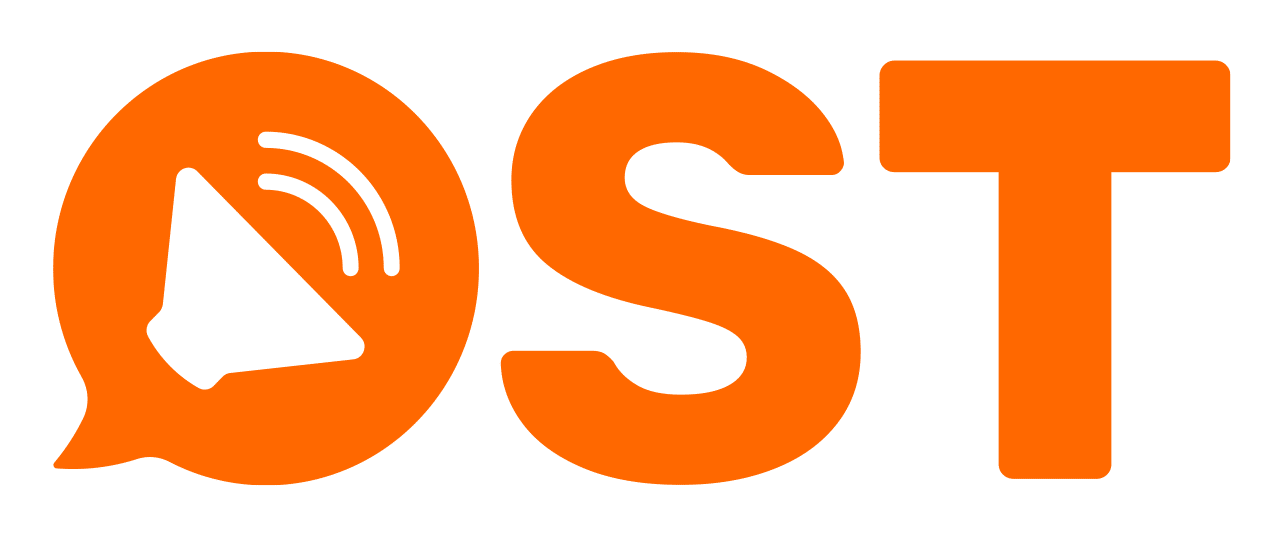How to Adjust Your Social Media Strategy for Coronavirus
With Coronavirus throwing marketing and communications into disarray, we’ve received a string of requests for guidance on how brands should respond on social media. What should they post? How will their messaging come across? Is there any point in pushing marketing content?
This is the first in a series of posts, videos and online discussions we’re going to host during March/April (and maybe beyond) to help brands adjust their social media strategy for the Coronavirus. Please share this with anyone you feel could use some advice, and if you have extra insights, send them to us so we can share them too.
Social media usage is spiking
Along with a reported 50% increase in Internet usage, social media usage is also spiking. One of the largest social media platforms, Sprinklr, has reported “unprecedented” levels of social media traffic as a result of the Coronavirus pandemic, while another leading social analytics companies told us last week that they had received one of their highest ever bills for Twitter data in March.
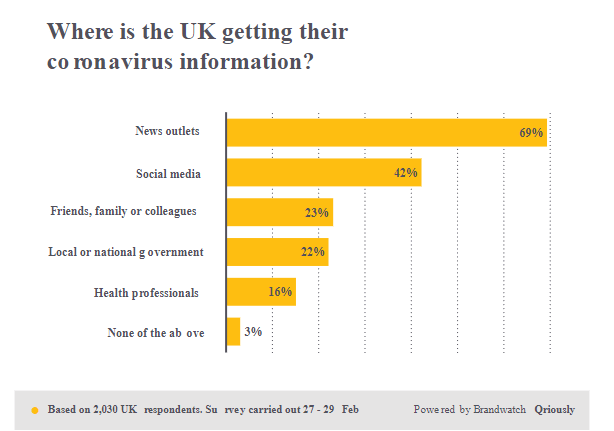
Social media usage has increased during the Coronavirus crisis
Brand engagement has dropped
Social media data analysts, Rival HQ have examined social media engagement with brands during Q1 and, in particular, the first two weeks or March. Overall, brand engagement is significantly down on previous periods, especially on consumer-facing channels.
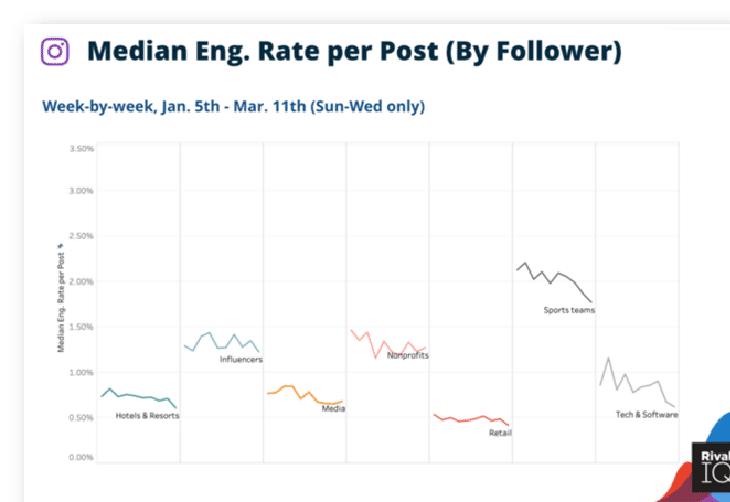
RivalIQ.com data shows large falls in consumer engagement with brands on Instagram and Facebook
Key findings included:
- 14% drop in Instagram median engagement rate. Sectors such as alcoholic drinks, health and beauty, financial services, food & beverage, hospitality, sports, tech & software are among the worst hit. Media and non-profits are, perhaps understandably, not experiencing this decline.
- 13.5% median engagement rate drop on Facebook. Higher education organisations are actually experiencing higher levels of engagement, as universities and colleges maintain online presence with students.
- 7% drop in engagement rate on Twitter. Twitter is heavily buoyed by increases in engagement within the media and higher education sectors.
These large falls in brand engagement may simply be due to people ‘switching off’ from brands during a time of crisis. Brands may also have been caught unawares by the crisis and still be rolling out pre-approved content that doesn’t reflect current audience interests – i.e. news, health and safety advice, mental wellness support etc.
Influencer engagement has increased
We’re seeing that consumer influencers, in particular, are attracting high levels of engagement on their posts as they share messages of support or tap into the humour of the situation (home-working memes!). Statistics discovered in this industry study found that Influencers on Instagram and TikTok have seen increases in engagement of up to 76% during the first two weeks of March.
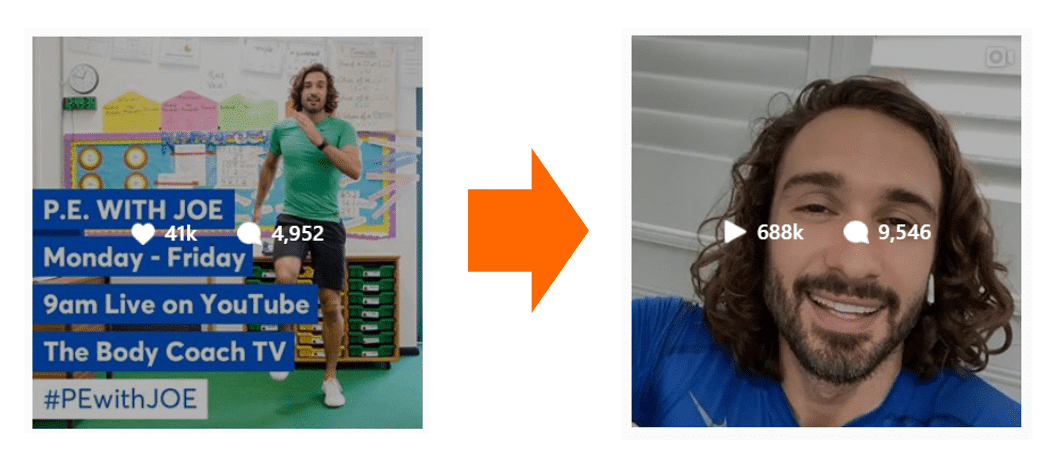
Influencer, Joe Wicks, has seen engagement on his Instagram channel sky-rocket as he responds to Coronavirus
Influencers are, typically, excellent at rapidly absorbing and reacting to their audience’s interests. There are lessons for brands to learn from this approach (at any time!), but in this time of crisis, brands should consider working more closely with influencers to maximise their reach and engagement.
LinkedIn is booming
At OST, we’re seeing some sharp increases in brand engagement and user activity on LinkedIn. This includes more post engagements and better advertising returns. We’re even seeing people respond to connection requests and InMails that are 3-6 months old.
This suggests to us that millions of office workers in the UK and Europe, now confined to their homes, are turning to LinkedIn to stay connected. There looks to be a clear opportunity for brands, especially those in B2B industries, to reach and engage with this new and attentive audience.
Everyone’s turning to digital events
With many brands unable to run offline events, many are turning to webinar and digital event platforms to reach their audiences. In the US, Bud Light, are running a #DiveBarTour which is being live-streamed from the homes of various celebrities.
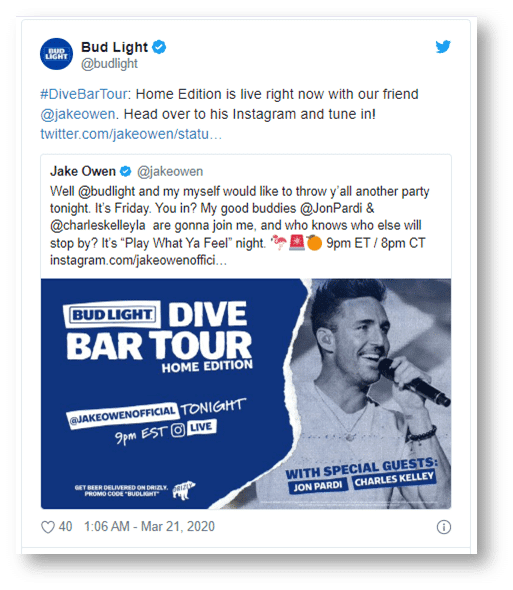
Bud Light are running a series of virtual events hosted by celebrities
We’re seeing B2B brands turning increasingly to webinars, podcasts and virtual events. Many of our tech clients, in particular, are now planning digital events, and we are advising them on howbest to approach these. Given the current increase in LinkedIn usage, posting pre-recorded ‘live’ videos onto LinkedIn, supported by advertising to drive reach, is an obvious first avenue to explore.
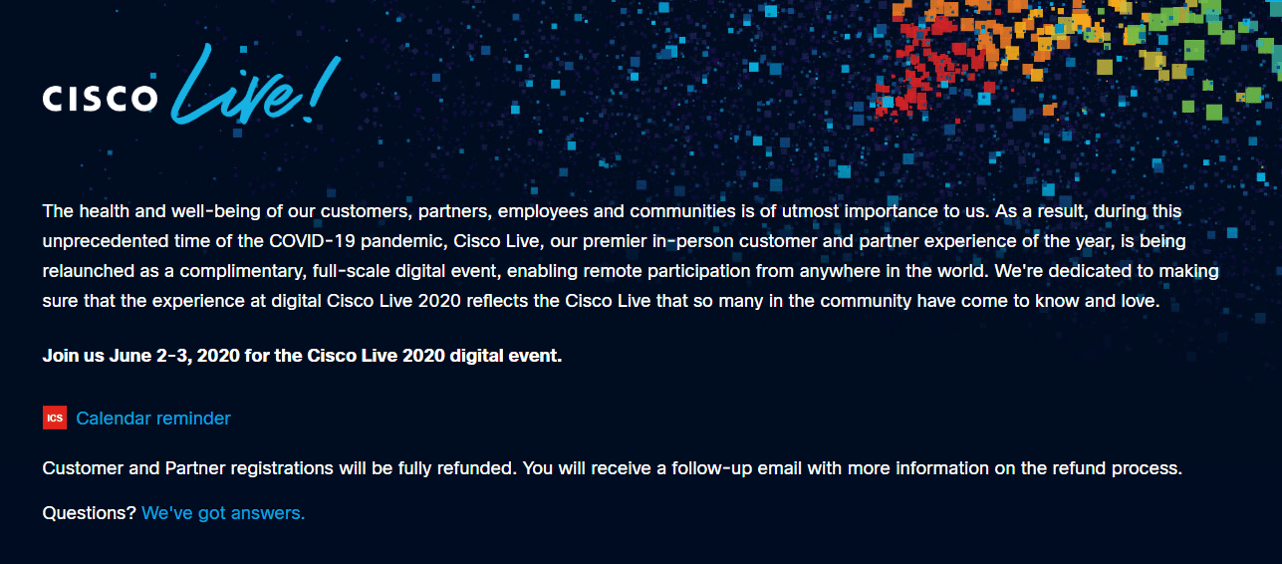
CISCO Live 2020 has gone online due to Coronavirus
Paid social shows promising signs
Early indications were that paid social costs were increasing as budgets shifted from ‘real world’ advertising into digital. Early in March, we noted significant jumps in CPC and CPL for several consumer and B2B clients. Logically, if brands are switching budgets into social ads, this could increase competition and costs.
In the past week, though, we have seen reductions in advertising costs, including within the hard-hit sports sector and the tech sector. This might suggest that audiences are calming down, checking their feeds and getting on with life, but it’s probably too early to say.
Social content needs a re-think
Undoubtedly the first things brands need to rethink their social content and review any planned content with fresh eyes. Here are seven tips to help you frame your outgoing social content:
- Listen – By simply scrolling through your social feeds, you can see what people are currently thinking about (tip: it isn’t your brand or products). Make notes and use these to inform your revised content strategy. For B2B brands, your LinkedIn feed will offer insight. Note the total lack of engagement on marketing posts.
- Drop sales messaging – Sales messages rarely work on social; but especially now, any even remotely sales-oriented messaging feels out of touch and insensitive. Think how your message will look in a feed next to a plea from a nurse who’s just done a 24-hour shift, for example.
- Expand your horizon – We’ve seen a lot of “Don’t worry XCorp is strong and reliable” messaging. This may be reassuring to clients, but it can also come across as insular and self-seeking. The best approach at the moment is to be 100% altruistic. Flip your content strategy towards supporting others, providing useful advice and insights. What value can your business offer at this time of need?
- Post less, but add value – If you can post one really helpful message every few days, maybe that’s enough? Review your “Business as Usual” content critically and consider shelving the majority of it, for now.
- Re-think your content marketing – Social posts can be helpful, but surveys, polls or collated industry insights offer a larger value potential. Instead of running a marketing piece, could you conduct some useful research on the impact of Coronavirus in your industry?
- Shift events online – With face-to-face not being an option, we’re organising a large range of online events for our clients. These can be turned around in a matter of days. Options include transferring conferences to webinar-based 1-day ‘events’, live streaming discussions on LinkedIn, or recording a series of podcasts.
- Find a new benchmark – During this period, monthly benchmarks lose meaning. If your content strategy has shifted to focus on adding value, how will you measure your impact? Engagement metrics may hold, but perhaps brand sentiment, positive feedback, industry followers, etc. come into play too.
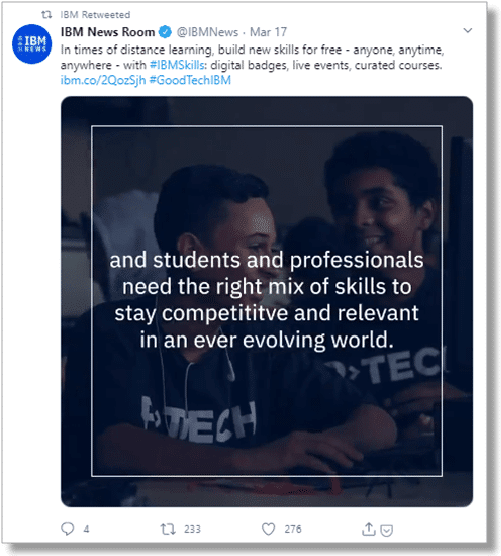
IBM are encouraging home-workers to use their learning resources
What’s next?
OST will continue to monitor the impact of the Coronavirus on social media throughout April, and we will continue to do so for as long as it lasts. We will host discussions, share videos and post relevant content, which will benefit your brand in these most challenging times.
To get alerts about our activity on both social media and on our website, please sign up here. Equally, if you have any ideas or insights to share, please email us, and we will share these too.
